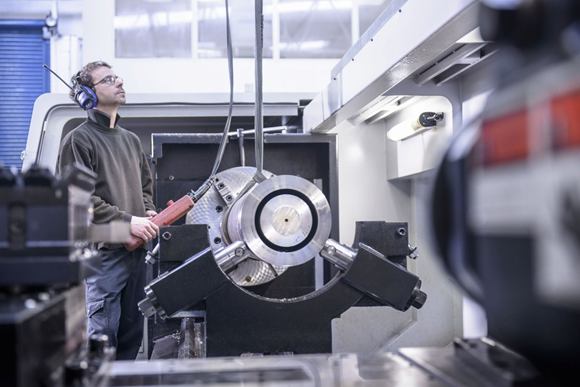
Trepanning is a specialist machining technique for drilling large holes in materials, particularly in situations where limited machine power is available, or if you wish to retain the core material from the bore instead of reducing it into swarf chips. Unlike conventional solid core drilling, trepanning only drills an annulus, or a ring, at the fringe of the hole, leaving the core intact so that it can be easily removed. Due to the lower amount of power required, since the core is not being drilled, the method is a suitable alternative if sufficient machine power cannot be attained. If you’re considering trepanning metal for your next engineering project, it’s worth considering the following key questions, to ensure that you plan every aspect to achieve the best possible results.
1) What Materials Do You Want To Use Trepanning For?
Firstly, it’s important to consider whether the materials you intend to use can be trepanned. Fortunately, trepanning can be used with a variety of metals, including aluminium, chrome, stainless steel, titanium, nickel (and nickel alloys), and superalloys such as Inconel and MP35N.
2) Do You Need To Retain A Solid Core?
One of the main advantages of trepanning over solid-core drilling is that you can reclaim the core material from the inside of the hole after it has been drilled. If cost-effectiveness is a priority for your project, opting to trepan metal is a prudent decision. Reclaiming the solid core from the trepanned material can cut down on waste and lost revenue, as it can be recycled, reused in other projects, or sold. Bar, or billet, can frequently be reused, although it should be remembered that the properties of the metal may have changed due to the trepanning process and therefore the original certification is no longer to be relied upon for quality purposes.
3) What Will You Do With The Waste Material?
Solid core drilling produces a large amount of waste, as the core material from the hole is broken down into tiny fragments - swarf. During the machining process, the presence of debris from the hole can often be problematic, obscuring the vision of the operator and accumulating around the drill head. Sometimes, the process must be paused while the swarf is cleared which can potentially cause quality issues.
Once trepanning has been completed, the core material can be removed, offering considerable savings in the future. The waste material can be recycled for other jobs, reducing the need to purchase new raw materials, or sold if the metal is particularly valuable.
4) What Is The Turnaround For Your Project?
Unlike deep hole boring, trepanning only creates a ring around the periphery. The core can then be easily removed in one single section. Consequently, the time taken to complete trepanning is much quicker than conventional drilling methods.
5) What Bore Diameter Do You Require?
Trepanning is typically used to bore larger holes in metal, particularly larger than 100mm in diameter. Often, it is useful in situations where using a standard drill head is not considered to be cost-effective or when further machining is be carried out as the requirement is simply for a process bore.
6) How Tight Are Your Tolerances?
Compared to standard drilling, trepanning tolerances are much greater, so this method is suitable when your project doesn’t require high levels of accuracy.
Contact Hone-All For Our Trepanning Solutions
Trepanning is, typically, more cost-effective, more energy-efficient, and more environmentally friendly than drilling, producing less waste, lower power consumption, and quicker completion times. At Hone-All, we offer trepanning solutions that ensure you receive high-performance parts that meet your exact specifications. For more information, call us today on 01525 370666.






